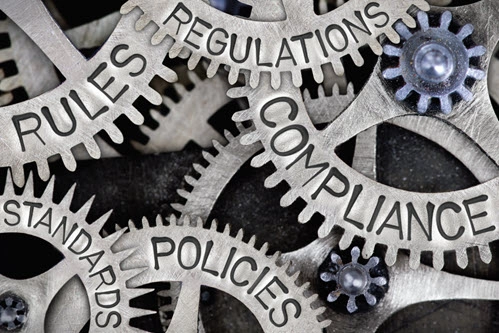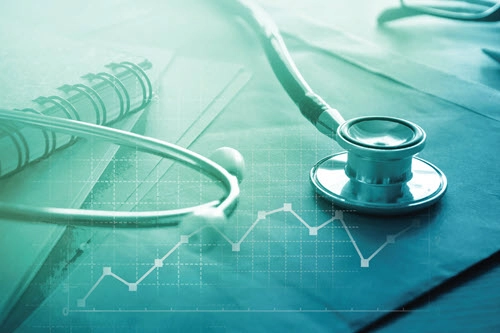Health Information Compliance Alert
Discover How These Federal Agencies Impact Health IT
Understand the HIT aspects that each group focuses on.
One thing is certain in federal healthcare — the government has an acronym for everything. And there are a myriad of departments and auxiliary agencies that deal specifically with health IT, patient privacy, and cybersecurity.

Pocket this list of 10 federal agency acronyms and examples of how they impact your health IT.
1. HHS: The Department of Health and Human Services is the United States’ primary health agency. It implements the nation’s public healthcare programs and initiatives, executes policies and regulations, governs food, drugs, and medical devices, and more. View the HHS landing page at www.hhs.gov.
2. OCR: The HHS Office for Civil Rights protects individuals’ civil rights in healthcare while safeguarding patients’ protected health information (PHI). OCR is also the federal enforcer of the various HIPAA Rules and deals with cases of discrimination and equity in healthcare, health IT, breaches of PHI/ePHI, and patient privacy and safety. Discover more about OCR and helpful HIPAA tools at www.hhs.gov/ocr/index.html.
3. ONC: Like OCR, the Office of the National Coordinator for Health Information Technology falls under the helm of HHS and specifically concerns federally-related health IT issues. ONC advances health IT policies, governs and manages standards for software applications and EHRs, and offers guidance on health data exchange, innovation, interoperability, and infrastructure. See what the ONC is all about at www.healthit.gov.
4. CMS: The Centers for Medicare & Medicaid Services supervises the federal health insurance programs — Medicare, Medicaid, and the Children’s Health Insurance Program — as well as other federal and state payer programs. CMS supports and monitors health information exchanges, data sharing, and interoperability through its various programs as well as sets policy and coordinates with the ONC on health IT-related rules. Review the latest CMS innovations and regulatory reform related to health IT and telehealth at www.cms.gov.
5. CISA: The Cybersecurity and Infrastructure Security Agency works with other federal departments to protect the country’s infrastructures and encourage cybersecurity. Under CISA, the National Risk Management Center (NRMC) works with IT partners and stakeholders to manage and circumvent cyber risks to the nation — including healthcare issues. Check out emerging threats, CISA resources, and adjacent sector guidance at www.cisa.gov.
6: NIST: Primarily a federal research organization, the National Institute of Science and Technology helps improve and define the quality and standards of health IT. Review NIST guidance on the intersection of healthcare and IT at www.nist.gov/health-it.
7. ASPR-TRACIE: The HHS Assistant Secretary for Preparedness and Response-Technical Resources, Assistance Center, and Information Exchange focuses on disaster medicine and planning, emergency preparedness, and public health. ASPR-TRACIE offers extremely helpful technical resources for providers to plan for things as varied as pandemics, natural disasters, or mass violence attacks — and insight on how to continue offering care to patients after incidents happen. Peruse the guidance and tips at https://asprtracie.hhs.gov.

8. FCC: The Federal Communications Commission is a tech-centered independent federal agency that regulates both national and international communications across a variety of platforms. The FCC has greatly impacted health IT, overseeing congressional implementations, creating policies, and supporting the “adoption of broadband-enabled health care solutions and the development and availability of health-related technologies for all Americans,” Commission guidance says. Plus, the FCC has a hand in telehealth services funding and management as well as medical device development. Get the scoop on the FCC offerings at www.fcc.gov.
9. FDA: The Food and Drug Administration, which is an agency within HHS, has the very critical role of “ensuring the safety, efficacy, and security of human and veterinary drugs, biological products, and medical devices” as well as safeguarding the “nation’s food supply, cosmetics, and products that emit radiation,” notes FDA guidance. In addition to its regulatory work over drugs, tobacco, food, and medical devices, the FDA supports and manages the development of new medical products while safeguarding these products against terrorists. Find the FDA tools and tips at www.fda.gov.
10. OIG: The HHS Office of Inspector General is the chief investigator of fraud and abuse in public healthcare programs, and that includes scrutinizing health-IT related items like EHR usage, telehealth, mobile and medical devices. OIG resources are available at https://oig.hhs.gov.
Health Information Compliance Alert
- Case Study:
Do You Know Your State’s Laws on Telehealth?
Tip: Stay on top of evolving changes. There’s no doubt that the telehealth expansion in [...] - Human Resources:
Harness EHRs, Audits to Give New Providers a Leg Up
Organize and then communicate the needs of your other team members. It’s common for practices [...] - Toolkit:
Discover How These Federal Agencies Impact Health IT
Understand the HIT aspects that each group focuses on. One thing is certain in federal [...] - Reader Questions:
Take Care With This Sensitive Material and Information
Question: My clinic performs COVID-19 vaccinations. Can we dispose of the vials and syringes like [...] - Reader Questions:
Check State Regs on Confidentiality for Minors
Question: At our family practice, we have patients between the ages of 15 and 17 [...] - Enforcement News:
Feds Aim to Reverse Title X ‘Gag Rule’
A recent notice of proposed rulemaking hopes to undo the past administration’s Title X requirements [...] - Enforcement News:
COVID Vaccine Equity Is Front and Center
A consortium of Department of Health and Human Services (HHS) agencies are working together to [...] - Enforcement News:
Health IT-Related Targets on OIG Priority List
If you were planning on beefing up your compliance efforts, the HHS Office of Inspector [...]

